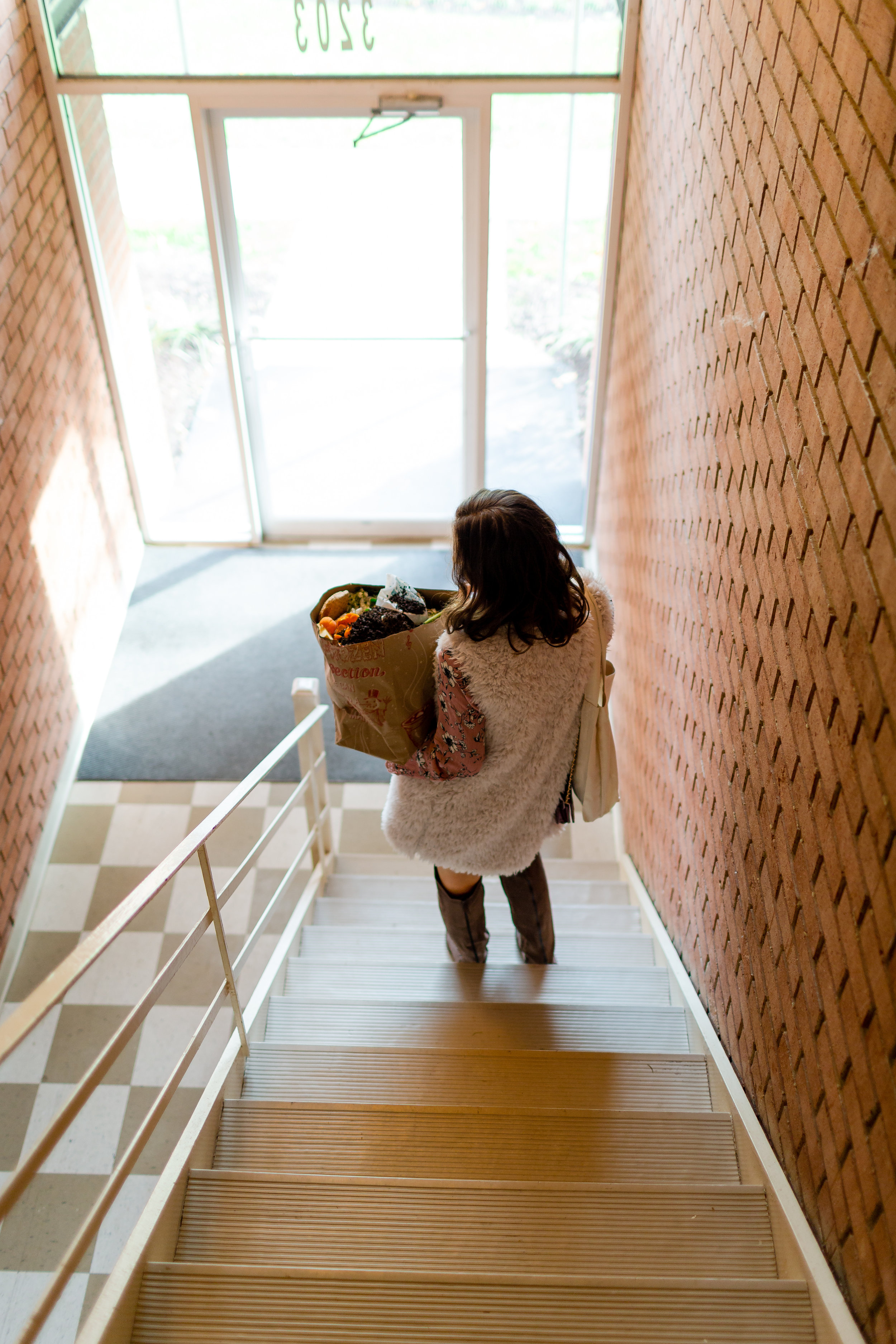Getting On Board: Our Slow Living Journey

The journey of minimizing was not always an easy one. While my husband was kind enough to get on board early on he was not always as inclined to get rid of things as quickly as I was. This hesitation was not a bad thing per say, however it was a cause of frustration at times. I'm the type of person that likes to move quickly once I have some sort of plan. I want to get things done. This was reflected in the beginning of my minimizing journey, where, I was so eager to get rid of the excess that I didn't always consult my significant other. This was okay when it came to letting go of my personal belongings but when it involved his personal or our communal items, that was when I found I needed to slow down and make sure that he was on board.
Slowing down and having an open dialogue is something that everyone should partake in when minimizing as a family. Whether its you and a roommate, partner, or kids, there needs to be conversations about why you would like to de-clutter, the benefits that it will offer, and how de-cluttering will align with your values. Some may be more on board than others and that's okay. First and foremost, focus on de-cluttering your items. Don't get stuck up on judging others. Overtime, your family might see the benefits that you receive from simplifying your life and follow suit.
In the mean time, if there are some significant pieces that you would like to let go of but aren't quite sure about, as a family, conduct a trial run. Observe how often you use the piece in question. Does it align with your family's values? Next, remove the piece from daily use for a period of two to eight weeks. During this time consider what you could do with your time, money and space if you didn't have this piece in your life. Is it worth letting go of? After the period of time, come together as a family and discuss whether you find the piece in consideration merits coming back into your lives. If it adds value then keep it, if you decide it does not sell or donate it. Including others in the conversation is a form of great respect. It shows that you value them and their opinions; that you function as a healthy family. When you take the time to listen to others, often times they will honor you in the same way; and will be more willing to consider your requests.
An example of this was when I proposed to my husband one afternoon that we get rid of our T.V. It was something that I had never considered until I recently started hearing about people who have the means to own one but decide not to. Another example is when I suggested we consign several of our crystal pieces. When I had registered for our crystal it was not necessarily because they reflected our style or that we had need for them, it was that everyone we knew growing up had them. They would get pulled out during the holidays or for showers but for the majority of the year, they collected dust in cabinets or closets. I also found that our collection took up a good deal of space. It seemed silly to give so much real estate to items that my husband and I rarely used. After spending some time considering what to do, we decided to consign everything but our crystal stemware (which we now use everyday), a vase, and a small dish. What clicked for me in letting go of it, is that if I'm entertaining I'm more likely to use more simple, organic platters than crystal. It's just not my style. If I want to dress things up, I can pull out our nice china and flatware.
Making these decisions together as a family is something that has brought my husband and I much closer together. Thinking through and discussing why we have what we have, we've been able to come to an understanding about what is important to us. By getting rid of our T.V., we've been able to incorporate more seating in our home, which has allowed us to have more guests over (something that has been a goal of mine for a while now). By living with less we have been able to create more space, time, and money for what matters to us in life.
3 Steps to Minimizing As a Family:
1.) Observe how often you are using the piece in question. Does it align with your family's values?
2.) Remove the piece out of the room for a period of time (2-8 weeks). During this time consider what you could do with your time, money and space if you didn't have this piece in your life. Is it worth letting go of?
3.) After a period of time, come together as a family and discuss whether the piece in consideration merits coming back into your life. If it adds value then keep it, if you decide it does not sell or donate it.
Photo Credit:


















A quick glance at her home address and list of professions, most would be quick to see that Sheena Jeffers is seizing life. It was about a year ago that Sheena and her boyfriend Ryan sold their home and belongings, and moved onto their 43-foot catamaran boat which they appropriately named "Seas Life". Instead of being tied down, they are making room for peace in their lives... traveling and discovering more about themselves, the world, and their life purpose.